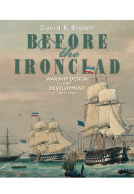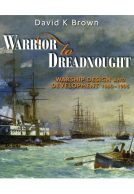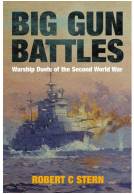Atlantic Escorts (Paperback)
Ships, Weapons & Tactics in World War II

Pages: 176
Illustrations: 150 mono illustrations & line drawings
ISBN: 9781399020046
Published: 8th June 2022
(click here for international delivery rates)
Need a currency converter? Check XE.com for live rates
| Other formats available | Price |
|---|---|
| Atlantic Escorts ePub (40.2 MB) Add to Basket | £9.99 |
Winston Churchill famously claimed that the submarine war in the Atlantic was the only campaign of the Second World War that really frightened him. If the lifeline to north America had been cut, Britain would never have survived; there could have been no build-up of US and Commonwealth forces, no D-Day landings, and no victory in western Europe. Furthermore, the battle raged from the first day of the war until the final German surrender, making it the longest and arguably hardest-fought campaign of the whole war. The ships, technology and tactics employed by the Allies form the subject of this book. Beginning with the lessons apparently learned from the First World War, the author outlines inter-war developments in technology and training, and describes the later preparations for the second global conflict. When the war came the balance of advantage was to see-saw between U-boats and escorts, with new weapons and sensors introduced at a rapid rate. For the defending navies, the prime requirement was numbers, and the most pressing problem was to improve capability without sacrificing simplicity and speed of construction. The author analyses the resulting designs of sloops, frigates, corvettes and destroyer escorts and attempts to determine their relative effectiveness.
Atlantic Escorts provides a good overview of the often-overlooked small Allied escort vessels used in the Battle of the Atlantic. Brown offers a relatively concise examination of the various classes of ship, their evolving anti-submarine arsenal of detection technologies and offensive weapons, and a chorological summary of escorts from their initial interwar existence to the secession of hostilities in 1945. Such a focused study offers another insight into the protection of transatlantic convoys during the Second World Warm and serves as a useful resource for those studying escort ships, early sonar and radar technology, and the implementation of large-scale anti-submarine efforts under wartime conditions.
The Northern Mariner/Le marin du nord
If you have an interest in the naval escorts that worked with the Atlantic Convoys during WW2, I think this one really deserves a place on your bookshelf.
Military Model Scene
Read the full review here
I thoroughly enjoyed this book and highly recommend it to all those with an interest in naval matters, especially naval strategy and planning future force structure. The author is very balanced in his assessment and analysis of the pros and cons of the various ship designs and supports his remarks with first-hand experience and quantifiable data where practical. This book raises important considerations for the current state of anti-submarine warfare and the effectiveness of current and planned solutions to the evolving and challenging problem of increased submarine underwater speed, improved stealth, weapon and sensor developments and growing numbers of submarines and other underwater vehicles in general.
Australian Naval Institute
Read the review here
Atlantic Escorts has flowed from the pen of a master who has written so many fine books about the history of ship construction. It is a small masterpiece.
Warship International Fleet Review
a valuable addition to the bibliography of the Battle of the Atlantic.
Cruising Association - September 2008
Written in such a way that both the informed and layman will derive something new as regards the design, not only of the ships but also of the equipment that was developed during the war years. This is of course augmented by copious illustrations both photographic and by line drawings. The photographs are in most cases completely new and are all well presented and reproduced. This in itself should give the model-maker plenty to ponder if they are interested in warships of this period. All in all, this is certainly a book that should be on the shelves of persons interested in the development of the smaller warships and their tactical use prior to, and during WWII.
Model Boats - August 2008
The author, former Deputy Chief Naval Architect with the Royal Corps of Naval Constructors, has used his experience to bring to life the different classes of escort so that one can almost feel the motion of the vessel beneath ones feet. This book, says the author, is intended as a tribute to the designers and builders of the escort vessels, as well as their operators. It has succeeded.
Ships Monthly – Book of the Month – July 2008
Altogether, a very detailed year-by-year account of escort development for anti-submarine work from the period between the wars to post World War II. Readers will learn much from this record of the production of an effective type of escort vessel for defending merchant ship convoys in the Battle of the Atlantic. We should expect nothing less from an author who spent his entire life working with the Royal Corps of Naval Constructors, retiring as Deputy Chief Naval Architect in 1988.
The Nautical Magazine - May 2008
About D K Brown
D K BROWN was a distinguished naval architect who retired in 1988 as Deputy Chief Naval Architect of the Royal Corps of Naval Constructors. He published widely on the subject of warship design and built a reputation as a clear and brilliant commentator on the development of the ships of the Royal Navy. He died in 2008.



















